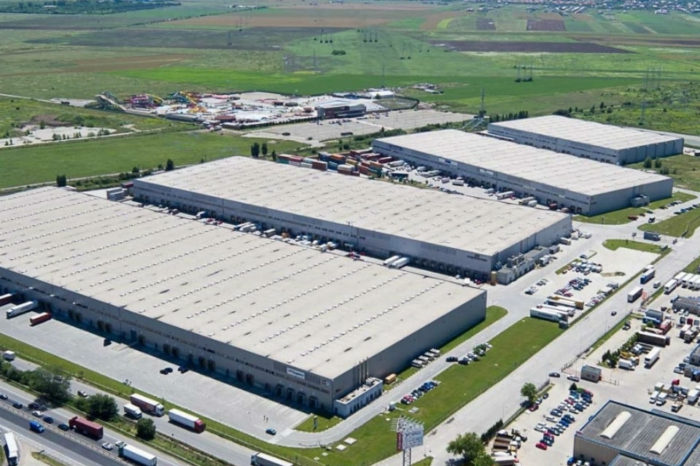Leonardo Badea (BNR): The evolution of the Romanian economy and the public policies mix

Opinion by Deputy Governor of the National Bank of Romania (BNR), Leonardo Badea
“For more than a year most discussions regarding the evolution of macro-financial variables and forecasts have involved references to the evolution of the COVID-19 pandemic.
The pandemic shock that has hit almost the entire globe is the most obvious and harsh demonstration that the health of the population and the risks of disease it faces, together with the overall development of the medical system have major repercussions on the evolution of the economy.
Implications of the medical crisis
If until 1 year ago we only talked about the long-term implications of these factors, more from a demographic perspective, in recent months we have become accustomed to using short-term models and high-frequency data to correlate the medical situation with the degree of restrictions of activities and mobility of people and finally with the expected evolution of the sectors of the economy.
After sharp decreases starting with the second half of November, the number of new cases of SARS-CoV-2 infection in Romania registers a quasi-stagnation during the first part of February, a trend visible in the number of patients admitted to ATI and the rate of testing positivity. At the same time, since the beginning of this year, the pandemic evolution in Romania was somewhat attenuated compared to the region. Given these conditions, we could have anticipated that in Romania there were favorable premises for a continuation of the economic recovery trend that manifested during the third and fourth quarters of last year. Unfortunately, the evolution of this pandemic is extremely volatile, and the situation can change significantly in only one week, thus any estimation regarding the evolution of the economy during the following quarters remains very imprecise.
For now, vaccination of the population is the only viable solution to overcome the medical crisis and implicitly the economic one, until the development of an accessible treatment, possible to be administered without hospitalization, aiming to reduce almost to zero the risk that an infected person will develop severe forms and also to decrease the period of convalescence. Until we will reach a reasonable level of collective immunity, we can assume that the current measures of distancing and the restrictions of several activities will be largely maintained in Romania throughout Q1 2021 (also in the context of a possible third wave of infections), mainly affecting the sectors in which the activity involves a significant degree of human interaction (for example HoReCa, transport, entertainment, cultural and recreational activities). Hopefully, as the vaccination effort progresses, we can expect that our abilities to forecast the evolution of the macroeconomic variables will improve gradually.
Short-term economic prospects
In Romania, the highest degree of volatility of economic indicators generated by the evolution of the pandemic was recorded during the 2nd and 3rd quarters of last year. We then had an unprecedented economic downturn in quarterly data, followed in the next quarter by a broad but incomplete recovery. During the fourth quarter, however, the return trend continued at a slower quarterly pace.
After the 3.9% contraction recorded for the whole of 2020, we can expect the economy to grow at a rate close to potential during the next two years, if the pandemic situation will not turn to worse than it is now. Otherwise, we could see a start-stop-and-restart pattern of activity in several important economic sectors and indirectly a lower level of consumption which will most probably lead to a still positive but possibly much lower growth this year.
We must keep in mind that economic activity was negatively affected in 2020 by weak agricultural production, with an estimated impact of about -1 percentage point on the average annual GDP dynamics, but it is possible that the current year will be at least neutral in the perspective of agriculture’s contribution to growth.
A prudent estimate leads us to the conclusion that the maximum level of real GDP registered before the crisis period (which was recorded at the end of the first quarter of 2020) may be reached and exceeded until the end of this year.
A series of high-frequency data shows that the positive surprise brought by the economic growth recorded during the last quarter of the previous year, compared to expectations, was due to developments in some sectors that have shown increased resilience to the pandemic situation, such as industry and trade. However, although the upward trend continued, the pace was slower for them as well.
During the fourth quarter of 2020 the construction sector, which recorded significant growth during the third quarter, was inevitably affected by the specific seasonality caused by weather conditions. In the case of services, the fourth quarter also showed a decrease of activity compared to the previous quarter.
For the first quarter of 2021 we can anticipate a slowdown in real GDP and its components, justified by a deterioration in the outlook for external trading partners, but we expect to see positive quarterly developments on seasonally adjusted data. In the absence of widespread adverse shocks and a significant new wave of infections (for example a third wave comparable in severity with the second one), economic operators are likely to continue to adapt gradually to the new conditions, and sectors such as industry or trade will continue to play the role of locomotive for economic growth, supported by demand (in particular by domestic consumption) and to a more limited extent by gross fixed capital formation, but possibly also by external demand in the event of a gradual recovery of our external trading partners.
Starting with the second quarter of 2021, against the background of the advance of the vaccination campaign, we can anticipate a continuation of the gradual relaxation of the restrictions imposed by the authorities. This is likely to boost economic activity in several other sectors, such as HoReCa. Activity in these sectors should normally also benefit from more favorable weather conditions, with the end of the cold season, which will facilitate outdoor activities, with the presumed reduction of contamination risks. Under these auspices, the economic recovery could become more widespread and robust in the summer.
The policy mix
The mix of public policies is always extremely important, especially during crises. In normal times this mix is decisive to preserve a balanced advance of the economy, without the risk of overheating, and to build adequate buffers that create or increase policy space, much needed to counteract unexpected adverse shocks. It also has an important role in steering the economy and the society towards innovation, increasing productivity, modernization and ESG (environmental, social and governance) goals. But probably the most visible effects (over short or medium term) of an adequate policy mix are felt during crises. It is especially under such exceptionally circumstances that public authorities need to cooperate and to synchronize their actions aiming to reduce both the intensity and the length of the adverse effects on the people and the economy.
As we know, in Romania the central bank not only has the role of monetary authority but is at the same time regulatory and competent authority for micro-prudential supervision of credit institutions, while also having responsibilities for the operation of payment systems and financial stability, the latter role being exercised under an inter-institutional collaborative framework by participating to the activities of the National Committee for Macroprudential Oversight.
From the perspective of all these responsibilities, the National Bank of Romania (NBR), which last year celebrated 140 years of existence in the service of the Romanian economy, acted with all available and necessary tools to contribute to mitigating the economic effects of the pandemic crisis.
The central bank’s actions have been gradual and carefully calibrated to address the complex challenges posed by an unprecedented crisis, about which it was expected from the beginning that it will not only have transitory effects but would involve profound structural changes and manifestations that could spill over a considerable period.
At the same time, it was quickly obvious to everyone that we were facing a crisis whose immediate consequences can be addressed more effectively through measures with rapid impact which are specific to fiscal policy. Monetary policy instruments can contribute to the mix of policies in response to such a crisis but have a lower impact and their effects are felt only gradually given their specific transmission horizon (lag). Monetary policy has such long outside lags because it primarily affects business investment plans. Thus, a change in interest rates may not have its full effect on investment spending for a considerable time. However, the particularities of this crisis make also relevant the impact on households and especially on their capacity to service debt given the sudden (hopefully temporary) shock on current income. It was an important issue that both the fiscal and monetary policies needed to address together, and this happened almost everywhere.
At the same time, we cannot forget the important differences between our economy and other economies in the region with which we often compare ourselves, and especially the important vulnerabilities and major structural deficiencies with which we have entered this crisis.
If the NBR had not taken them into account in the careful and prudent calibration of the conduct of monetary policy, there would have been a risk of turbulence whose magnitude, even if essentially unjustified by fundamental factors, had already begun to be visible in the local financial markets in the context of the sharp rise in risk aversion on the international markets.
However, nowhere in the world could this particular crisis have been addressed only by monetary policy instruments, and the idea that monetary policy has an answer to all problems is obviously deeply wrong. At the same time, I also think that it is wrong to consider that such a complex crisis should be fought only by fiscal policies. As long as the monetary policy has the necessary space in relation with its main objective of price stability, it is natural that in should contribute to the effort aimed of helping the people and the economy overcome the negative effects of the pandemic.
That is why there is no doubt that the inter-institutional collaboration and the synchronization of crisis response policies and measures, both at national and European level, have played an important role in effectively reducing the negative economic effects as much as possible until now. Especially from our country perspective where the space available for activating crisis response fiscal policies has been and is less extensive compared to other EU or euro area member countries, European solidarity has been an extremely valuable aid.
After one year of crisis, we are still in a situation where our visions continue to be plagued by uncertainty. Beyond our optimistic or pessimistic attitude, we must remain cautious in our approaches but also proactive, because the pandemic war has not yet been won”.














